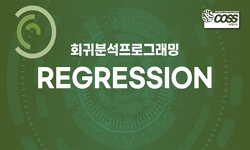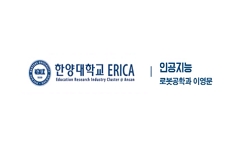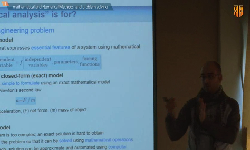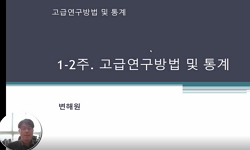목적: 한국인 녹내장 환자의 시야검사 각 지점의 변화를 분석하여 회귀 모델의 적합도와 예측 성능을 비교하였다. 대상과 방법: 6년 이상 시행한 시야검사가 10회 이상인 개방각녹내장과 녹...
http://chineseinput.net/에서 pinyin(병음)방식으로 중국어를 변환할 수 있습니다.
변환된 중국어를 복사하여 사용하시면 됩니다.
- 中文 을 입력하시려면 zhongwen을 입력하시고 space를누르시면됩니다.
- 北京 을 입력하시려면 beijing을 입력하시고 space를 누르시면 됩니다.


녹내장성 시야결손의 점별 모델링 = Pointwise Modeling for Predicting Visual Field Progression in Korean Glaucoma Patients
한글로보기https://www.riss.kr/link?id=A108342161
- 저자
- 발행기관
- 학술지명
- 권호사항
-
발행연도
2022
-
작성언어
-
- 주제어
-
KDC
510
-
등재정보
KCI등재,SCOPUS,ESCI
-
자료형태
학술저널
- 발행기관 URL
-
수록면
918-927(10쪽)
- DOI식별코드
- 제공처
-
0
상세조회 -
0
다운로드
부가정보
국문 초록 (Abstract)
목적: 한국인 녹내장 환자의 시야검사 각 지점의 변화를 분석하여 회귀 모델의 적합도와 예측 성능을 비교하였다. 대상과 방법: 6년 이상 시행한 시야검사가 10회 이상인 개방각녹내장과 녹내장의증 환자에서 시야검사 각 지점에서 시간에 따른 역치값 변화에 선형, 지수형, 다항형 회귀분석을 시행하였다. 평균제곱근오차(root mean squared error, RMSE)를 이용하여, 세 모델의적합도를 비교하였고, 첫 5년의 시야검사로 모델 추정 후, 1, 2, 3, 5년 후의 역치값을 예측하여 예측 성능을 비교하였다. 중심부와주변부 영역 및 초기 역치값에 따라 예측 성능을 비교하였다. 결과: 280명 439안의 평균 경과 관찰 기간과 시야검사 개수는 9.64년과 13.02개였다. 적합도 RMSE는 다항형이 가장 낮았다(p<0.001). 1년 예측에서 선형이, 3, 5년 예측에서 지수형의 RMSE가 가장 낮았다(모든 p<0.001). 1, 2년 예측 시, 초기 역치값 0-7 decibel (dB)에서 지수형이, 20-27 dB에서 선형이 RMSE가 가장 낮았다(모든 p<0.001). 선형과 지수형 모델을 비교하였을 때, 시야 주변부 1년 예측에서 선형이, 3, 5년 예측에서 지수형이 RMSE가 더 낮았다(모든 p<0.001). 시야 중심부 2년 예측부터 지수형의 RMSE가 선형보다더 낮았다(모든 p≤0.015). 결론: 한국인 녹내장성 시야결손의 점별 분석에서 단기 예측 시에 선형이, 장기 예측 시에 지수형이 성능이 우수하였다. 중심부 시야와 초기 역치값이 낮은 경우에는 지수형의 예측 성능이 선형보다 우수하였다.
다국어 초록 (Multilingual Abstract)
Purpose: To evaluate the utility of pointwise modeling for predicting visual field (VF) progression in Korean glaucoma patients. Methods: Open-angle glaucoma or glaucoma suspect patients with VFs ≥ 10 times, who were followed-up for ≥ 6 years, wer...
Purpose: To evaluate the utility of pointwise modeling for predicting visual field (VF) progression in Korean glaucoma patients. Methods: Open-angle glaucoma or glaucoma suspect patients with VFs ≥ 10 times, who were followed-up for ≥ 6 years, were included. Linear, exponential, and polynomial regression of threshold values at each test point against time were performed. Model fit was evaluated based on root mean squared error (RMSE) for the entire longitudinal VF series. To evaluate prediction ability, VFs from the first 5 years were used to estimate model parameters, followed by calculation of threshold values for 1, 2, 3, 5 years to obtain RMSE. Prediction ability was compared regarding initial threshold value and also central and peripheral VF area. Results: Four hundred thirty-nine eyes (280 patients) were included. The mean follow-up duration and number of VF tests were 9.64 years and 13.02, respectively. When fitting the entire VF series, polynomial model had the lowest RMSE (p < 0.001). For 1-year predictions, linear model had the lowest RMSE, while exponential model had the lowest RMSE for 3- and 5-year predictions (p < 0.001). For 1- and 2-year predictions, exponential and linear models had the lowest RMSEs, with initial sensitivities of 0-7 and 20-27 decibel (dB), respectively (p < 0.001). Compared to exponential model, linear model had lower RMSE for 1-year, but higher RMSE for 3- and 5-year at peripheral VF area (p < 0.001). For central VF area, exponential model had lower RMSEs for 2-, 3-, and 5-year predictions compared to linear model (p ≤ 0.015). Conclusions: The linear model outperformed the exponential model for short-term predictions, while the exponential model was better for long-term predictions. The prediction performance of the exponential model was superior to that of the linear model for central VFs, and for test points with lower initial sensitivities.
동일학술지(권/호) 다른 논문
-
- 대한안과학회
- 이행진(Haeng-Jin Lee)
- 2022
- KCI등재,SCOPUS,ESCI
-
진행성 위암으로 인한 중증 빈혈이 동반된 망막분지정맥폐쇄안에서 발생한 신생혈관녹내장 1예
- 대한안과학회
- 김형주(Hyeong Ju Kim)
- 2022
- KCI등재,SCOPUS,ESCI
-
경추간공 경막외 주사 후 발생한 조영제에 의한 일과성 피질시각상실
- 대한안과학회
- 윤소정(Michelle Youn)
- 2022
- KCI등재,SCOPUS,ESCI
-
뇌 자기공명영상에서 시신경교차의 조영증강을 보인 에탐부톨로 인한 독성시신경병증
- 대한안과학회
- 임채원(Chae Won Lim)
- 2022
- KCI등재,SCOPUS,ESCI




 KCI
KCI 스콜라
스콜라






